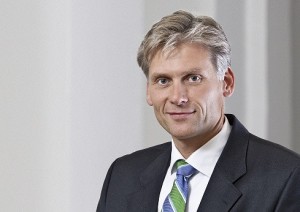Swedes finish strong, DNB pleased, Danske not satisfied
Feb 6th, 2014
Danske and DNB released fourth quarter results today (Thursday) that reflect “various stages of recovery” while reporting by Handelsbanken and SEB yesterday confirm the strength of the Swedish banking sector, said a KeplerCheuvreux analyst.
 Today’s results for Danske and DNB conclude the fourth quarter reporting season for the major Nordic banks, with Nordea and Swedbank having announced their results last week.
Today’s results for Danske and DNB conclude the fourth quarter reporting season for the major Nordic banks, with Nordea and Swedbank having announced their results last week.
Mats Anderson, equity analyst at KeplerCheuvreux, said that SEB and Svenska Handelsbanken increased distribution more than their peers, but that overall, pay-out ratios at the four major Swedish banks reveal strong balance sheets, low growth, and scope for increased capital distribution to shareholders, when there is green light from the regulator.
“Together this illustrates the strength of the Swedish banking sector,” said Anderson.
Danske’s and DNB’s results, meanwhile, reflect various stages of recovery, according to Anderson.
“In DNB’s case the bank is striving to deliver on drastically increased regulatory capital requirements and moving forward at a fast pace,” he said. “At Danske the recovery is an operational one and while there is a lot of work left to do, as the CEO said, the bank is moving ahead in the right direction.”
Danske posted pre-tax profit of Dkr2.9bn (Eu389m) for the fourth quarter (4Q2012A Dkr2.3bn), a 2% miss on consensus expectations, but delivered on quality items and will pay a dividend for the first time since 2007, noted Anderson.
The board is proposing a dividend of Dkr2 per share, equal to 28% of net profit.
Announcing the 2013 results, Thomas Borgen, chief executive at Danske (pictured), said that 2013 was a year of progress for the bank and that financial results improved, but “were still unsatisfactory”.
“We still have a way to go to realise the full potential of Danske Bank, but we are confident that we are moving in the right direction,” he said.
KeplerCheuvreux’s Anderson said he agrees with Borgen’s assessment.
“Danske can do much better, but at its core it remains a very good bank and it is on its way back to its roots,” he said. “With the Dkr2 dividend, management is communicating financial strength and its belief that it is seeing recovery.”Danske’s core tier 1 capital and total capital ratios were 14.7% and 21.4% at the end of 2013, according to the bank, which reiterated its plans to repay Dkr24bn of hybrid capital loaned by the state and its aim to improve its ratings by at least one notch in the short term.
DNB’s results were very positive, according to Anderson, with trading gains the main driver behind a substantial increase in revenues for the fourth quarter. Other highlights include what are effectively zero loan losses due to writebacks on its shipping portfolio, and a much better than expected cost to income ratio, he said.
“DNB posted good numbers although maybe not as high quality as we would have hoped,” he said. “At the same time with these earnings the bank is rapidly building capital to fulfil higher requirements for CET1, which is very good news for shareholders.”
The Norwegian bank reported fourth quarter pre-tax profit of Nkr6.9bn (Eu818m) (4Q2012 Nkr4.4bn), which is 24% ahead of consensus expectations. It is proposing a dividend of Nkr2.7.
Referring to the full year results — profits of Nkr17.53bn — the bank said that “healthy profits” contributed to an increase in the Group’s Common Equity Tier 1 (CET1) capital ratio from 10.7% to 11.8%, calculated according to transitional rules.
Rune Bjerke, DNB group chief executive, said that the group is pleased with the 2013 results, with profits contributing to “a very necessary” increase in the bank’s Tier 1 capital.
“DNB is well capitalised, but we need to build additional capital organically in order to meet the authorities’ requirements,” said Bjerke.
Swedes up pay-outs
Svenska Handelsbanken and SEB raised pay-out ratios after yesterday reporting pre-tax profit above expectations.
“They posted slightly stronger numbers that on the margin surprise a bit more positively,” said Anderson, “and both increased pay-outs more than the consensus expected.”
Handelsbanken is proposing a dividend of Skr16.50 (Eu1.87), comprised of an ordinary dividend of Skr11.50, up from Skr10.75 last year and in line with expectations, and a special extra dividend of Skr5.
In aggregate this takes the pay-out ratio for 2013 to 73% (48%), equal to that of Swedbank, noted Anderson.
“But because of the special extra dividend Handelsbanken is showing less commitment than Swedbank, reflecting its larger scope for growth,” he added.
SEB is proposing to pay an ordinary dividend of Skr4, equal to a pay-out ratio of 59%, higher than the 52% in 2012 (dividend of Skr2.75). The dividend represents a 45% increase.
“SEB has a dividend policy of more than 40% of EPS, so the 59% pay-out ratio is quite substantially above that,” said Anderson. “From a shareholder perspective this round of bank results has been more positive than I had hoped for, although the banks are far from the maximum of what they can distribute.”
Handelsbanken announced pre-tax profit of Skr4.5bn for the fourth quarter of 2013 (Q42012A Skr4.3bn), which is 1% above consensus expectations, return on equity of 13.3% (14.2%), and a Basel III CET1 ratio of 18.9%.
SEB reported pre-tax profits of Skr5bn (4Q2012A Skr2.8bn), which was 7% ahead of consensus expectations. It said that it continues to build capital and reported a Basel III CET1 ratio of 15%.








